Galapagos Species Database
The Galapagos Species Database shares the information about the species from our Natural History Collections.
Mangifera indica
mango, manguero
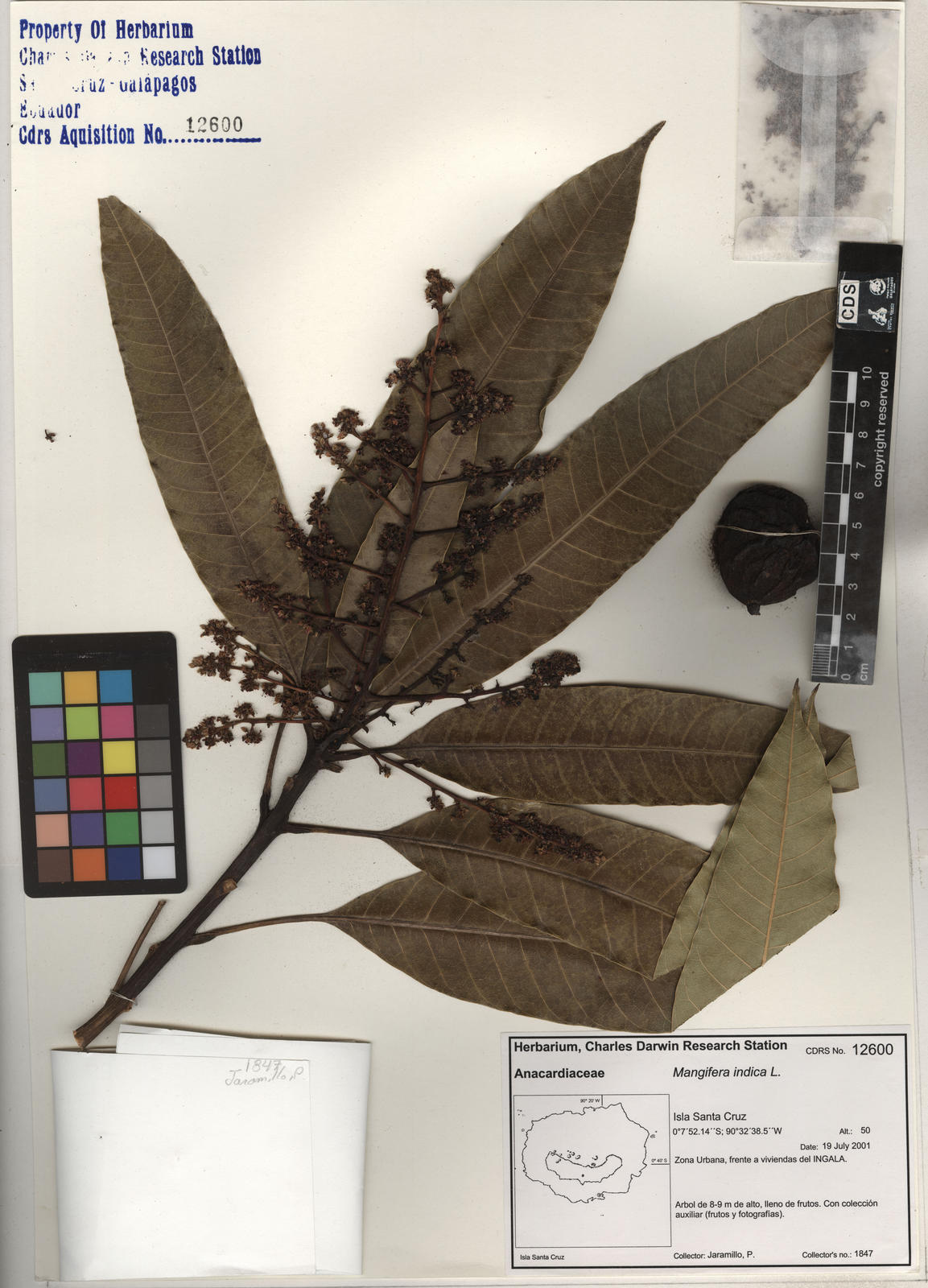
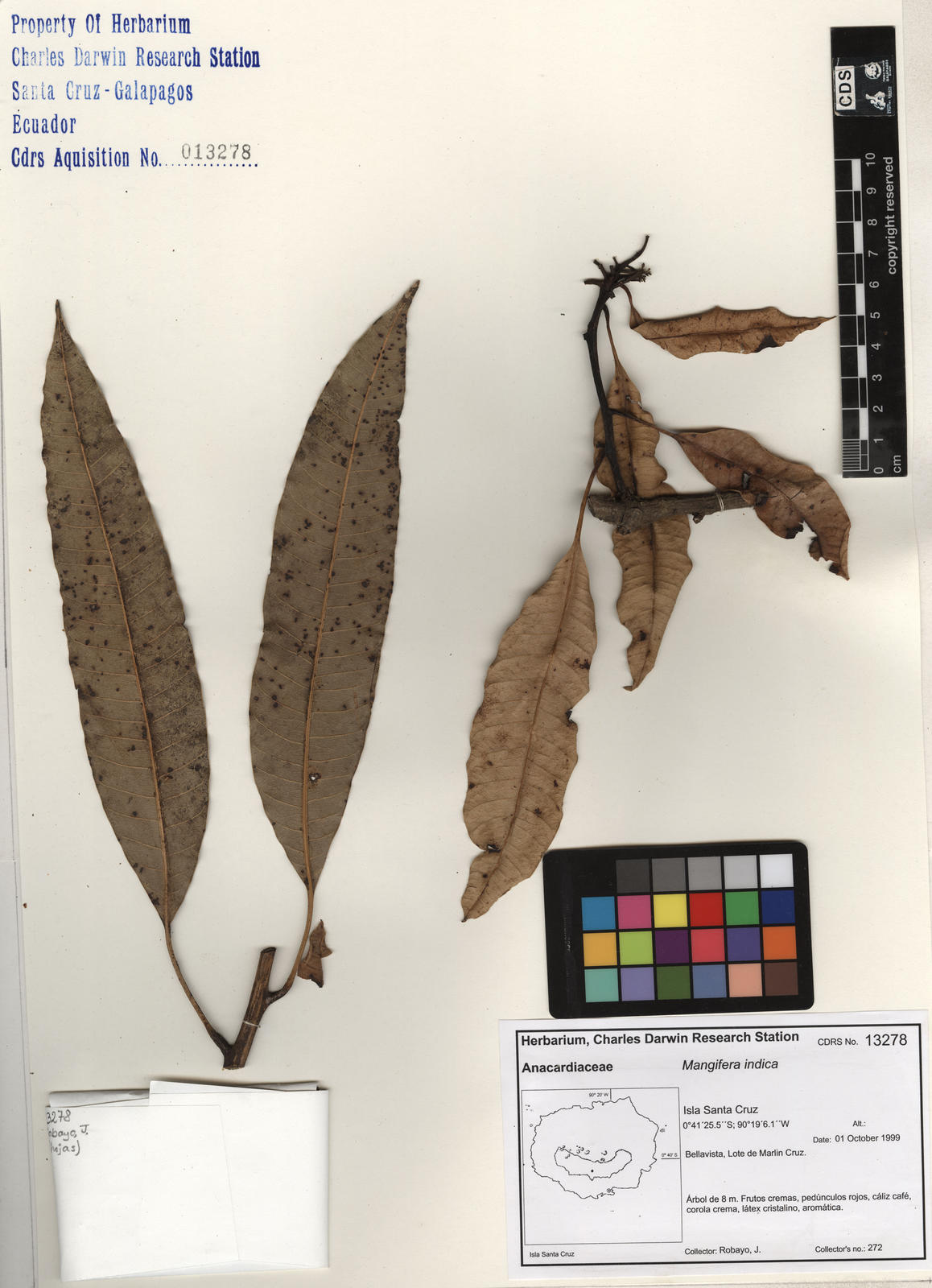
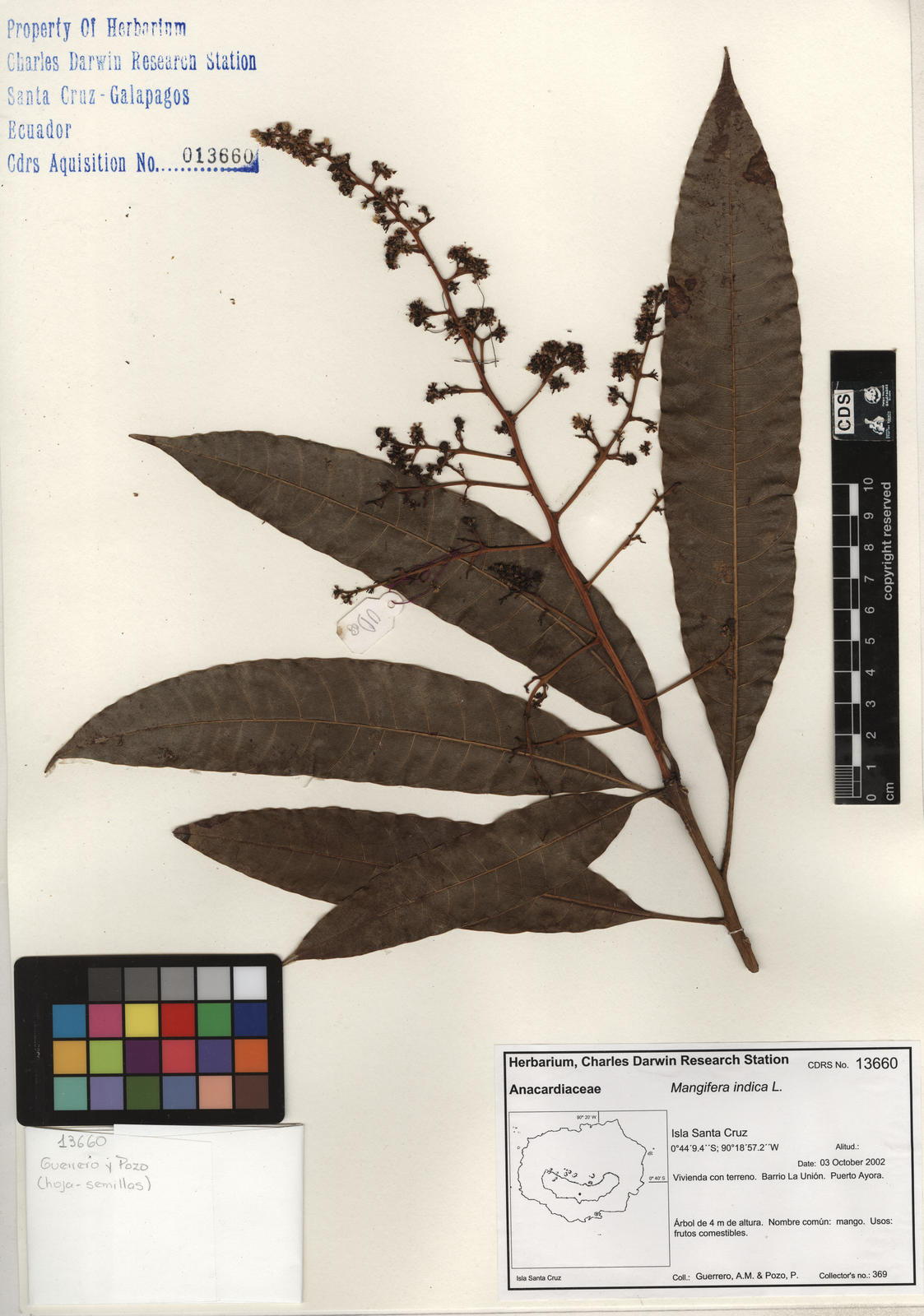
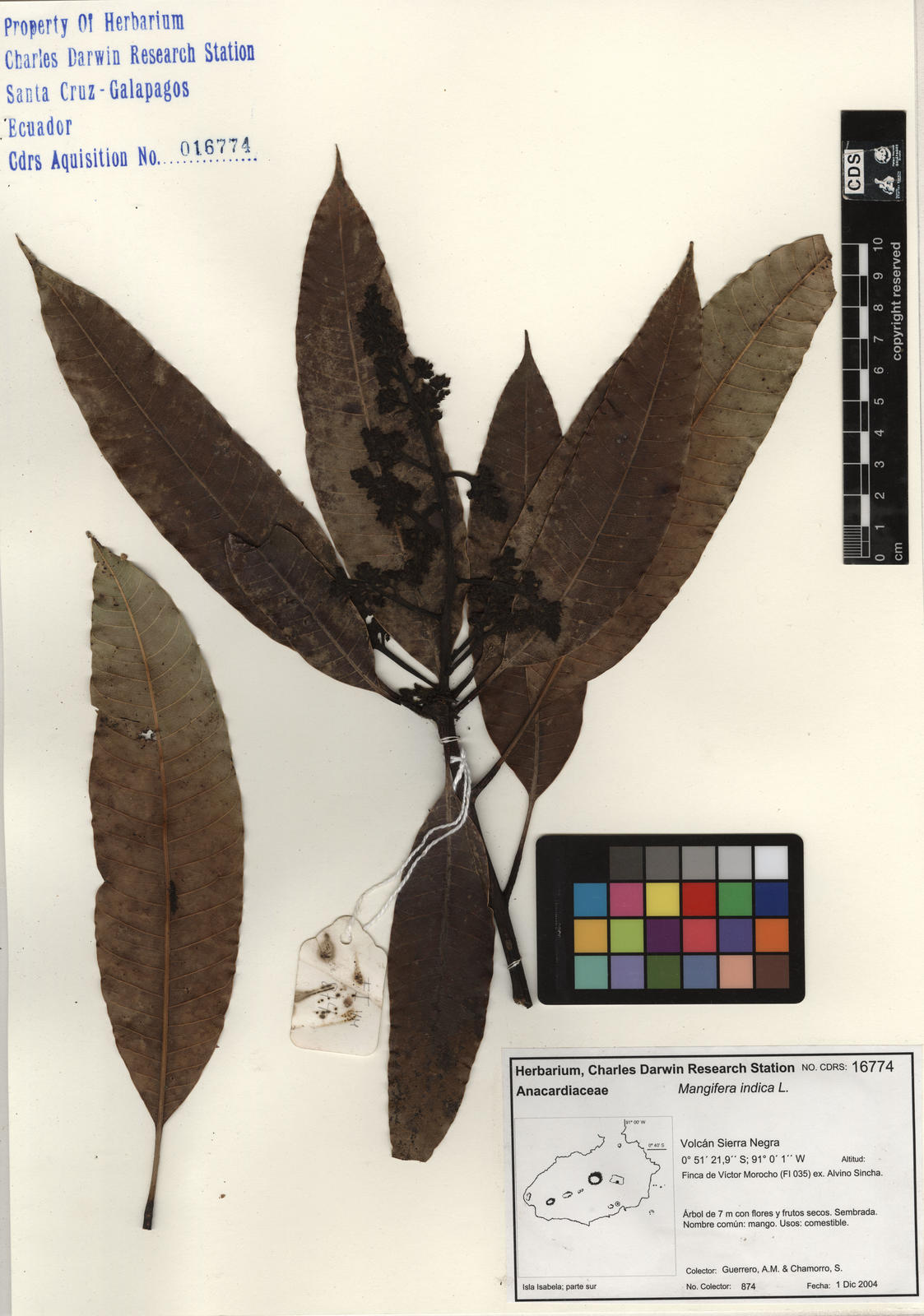
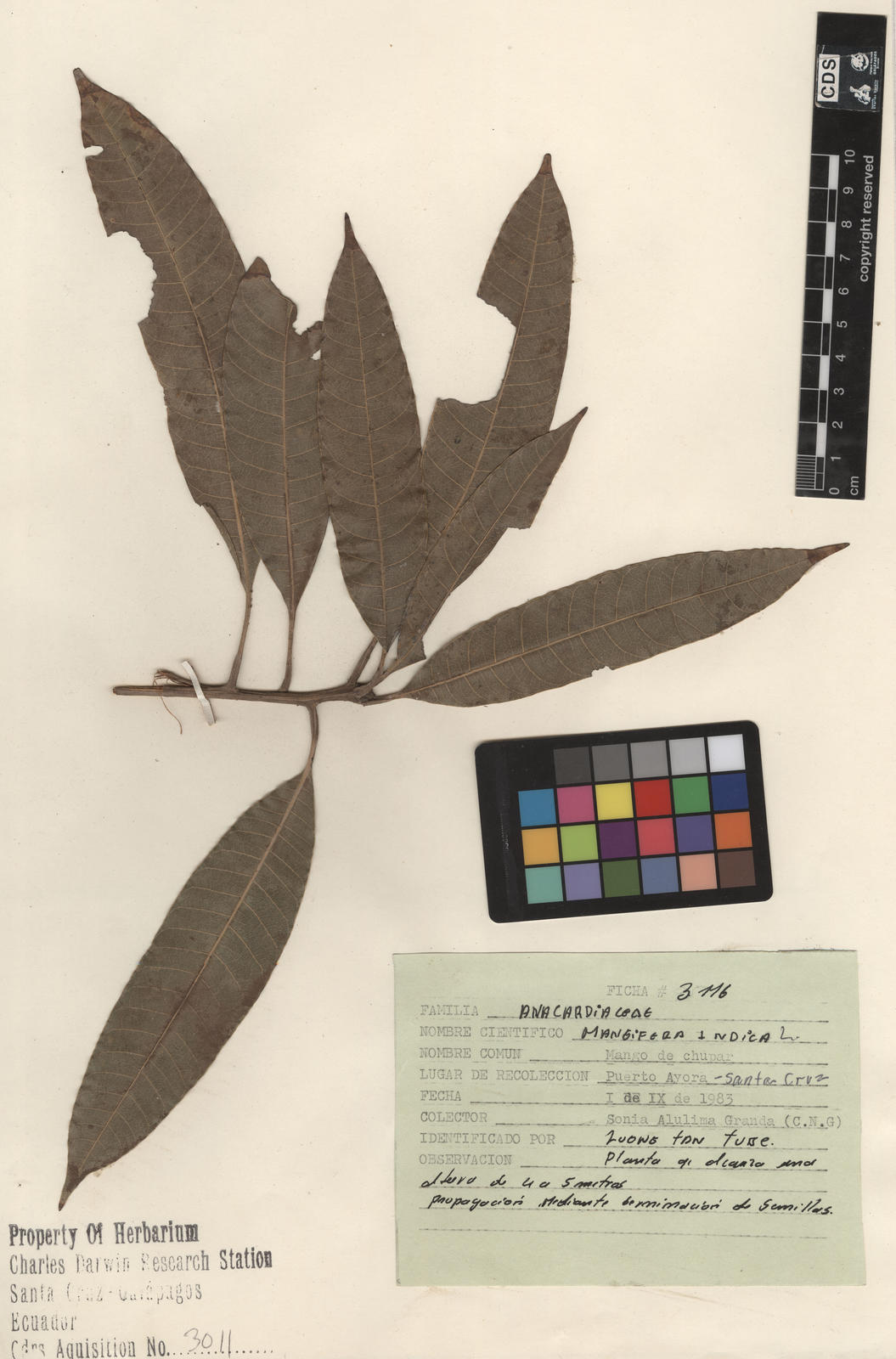
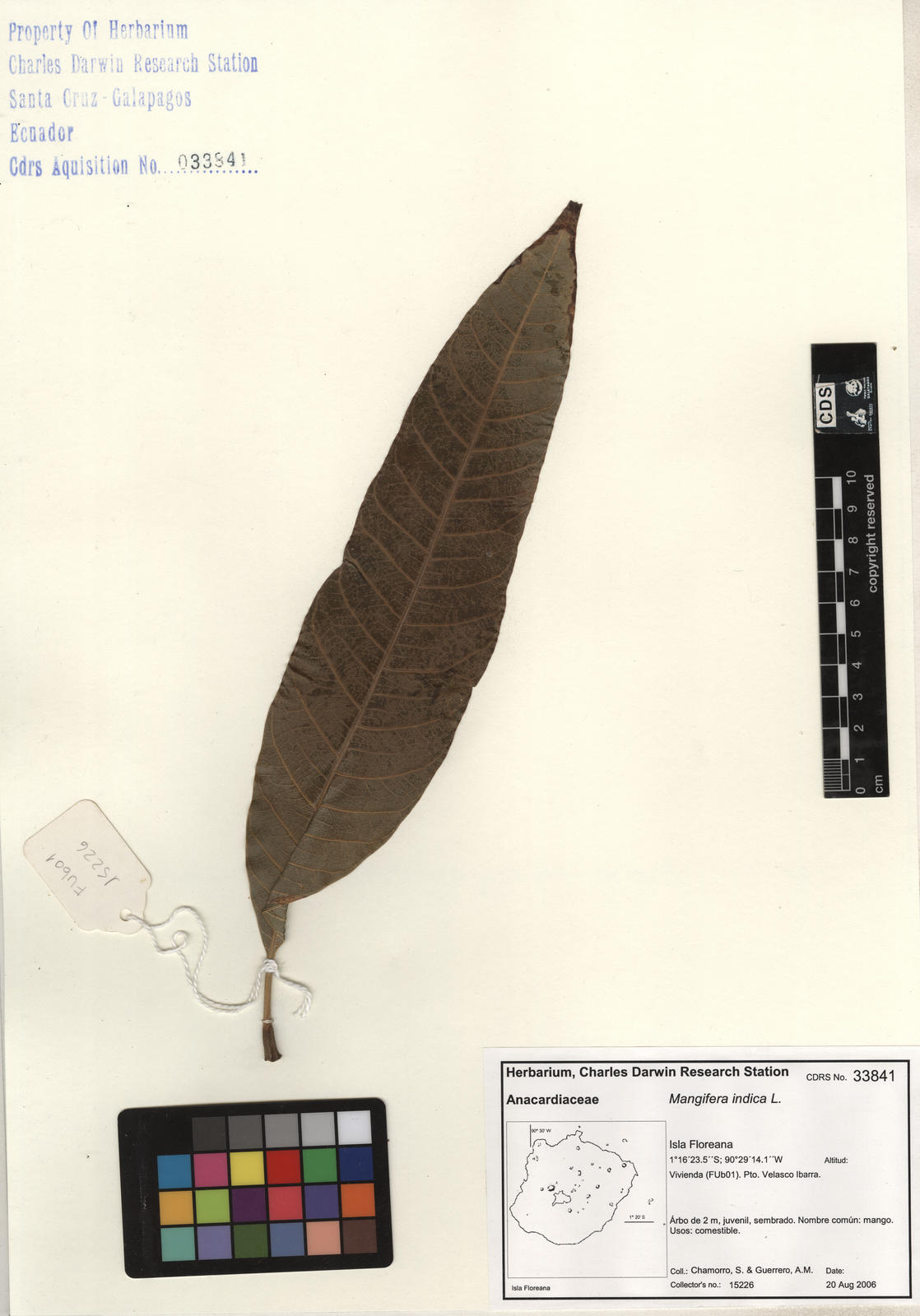
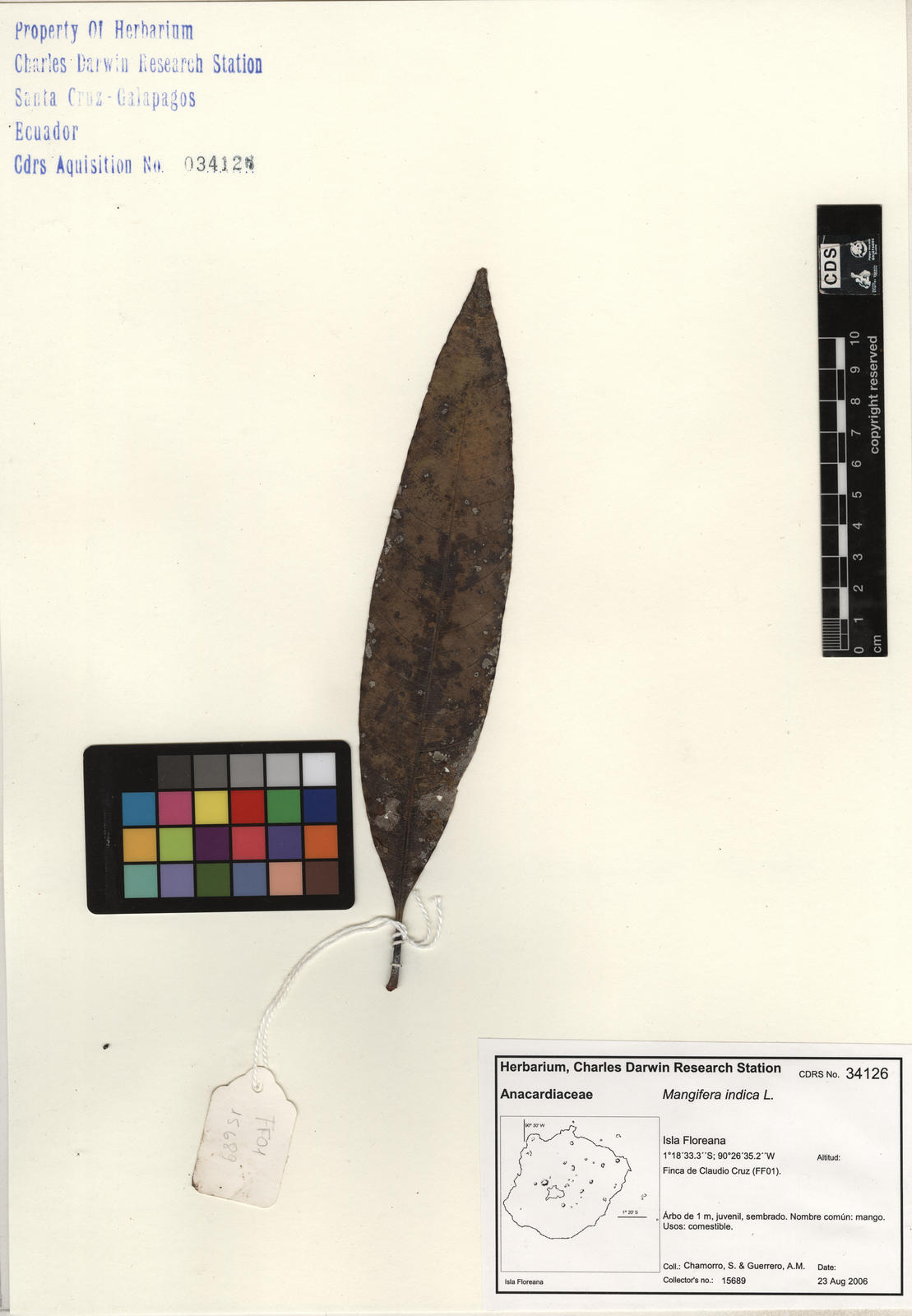
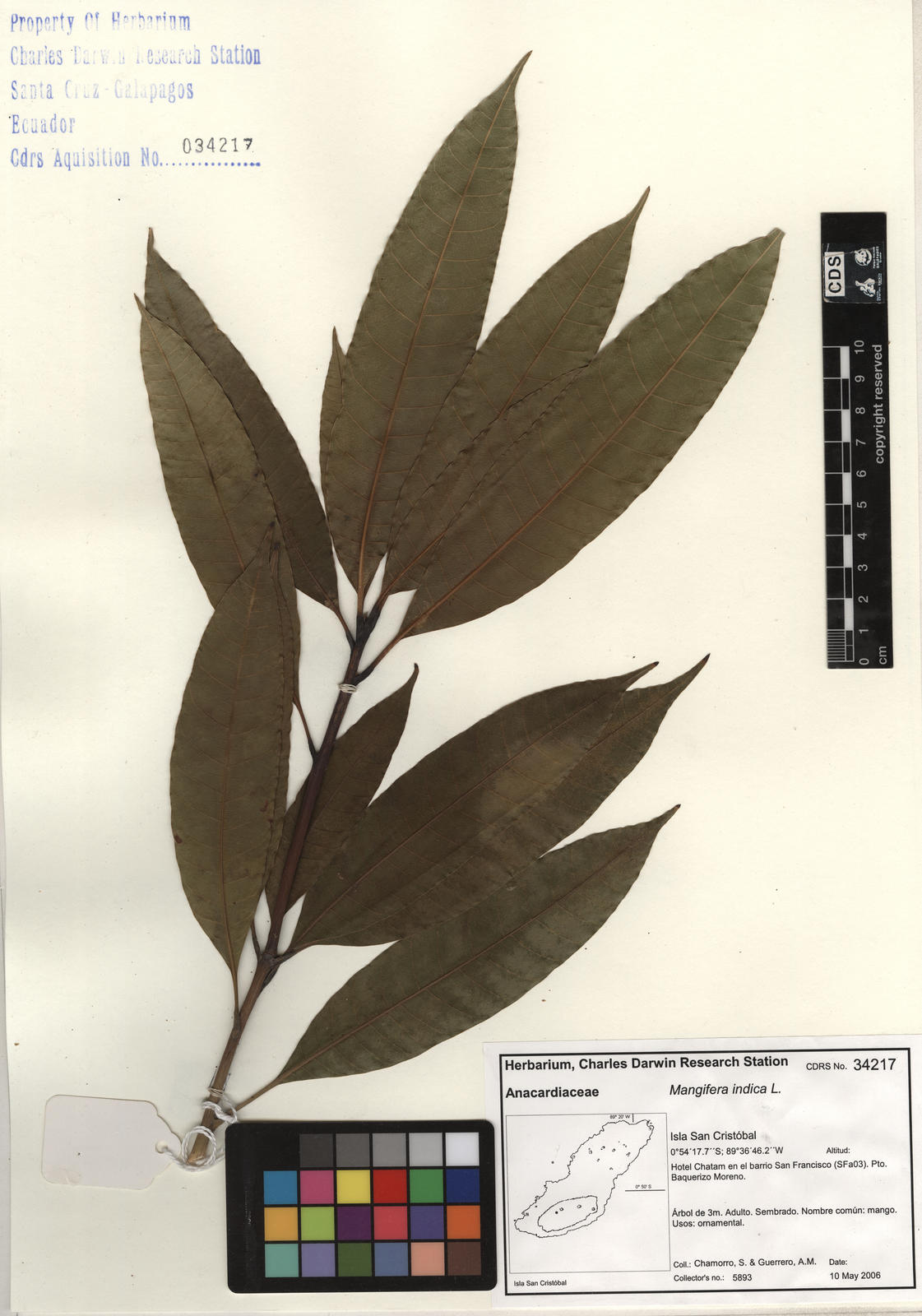
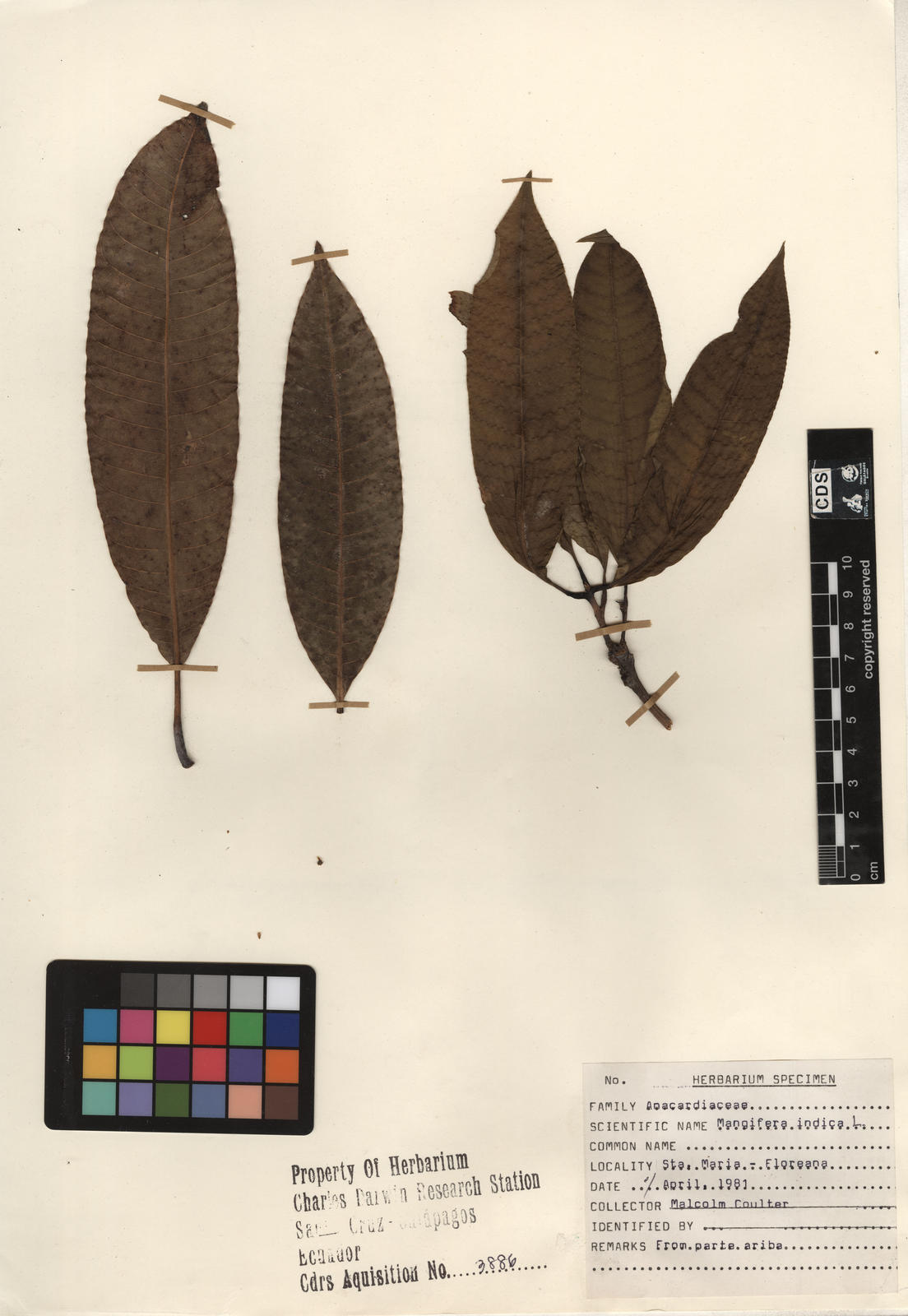
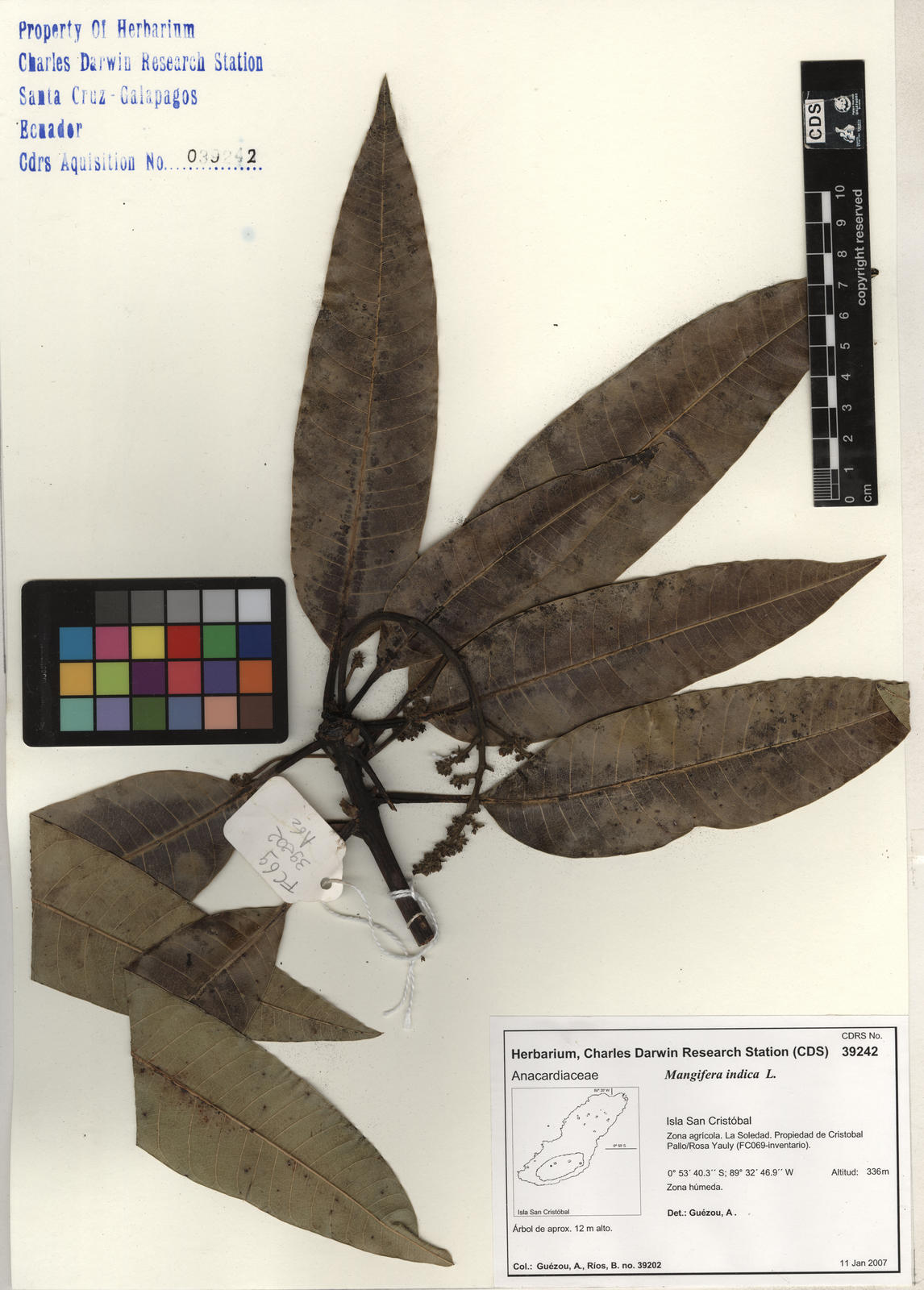
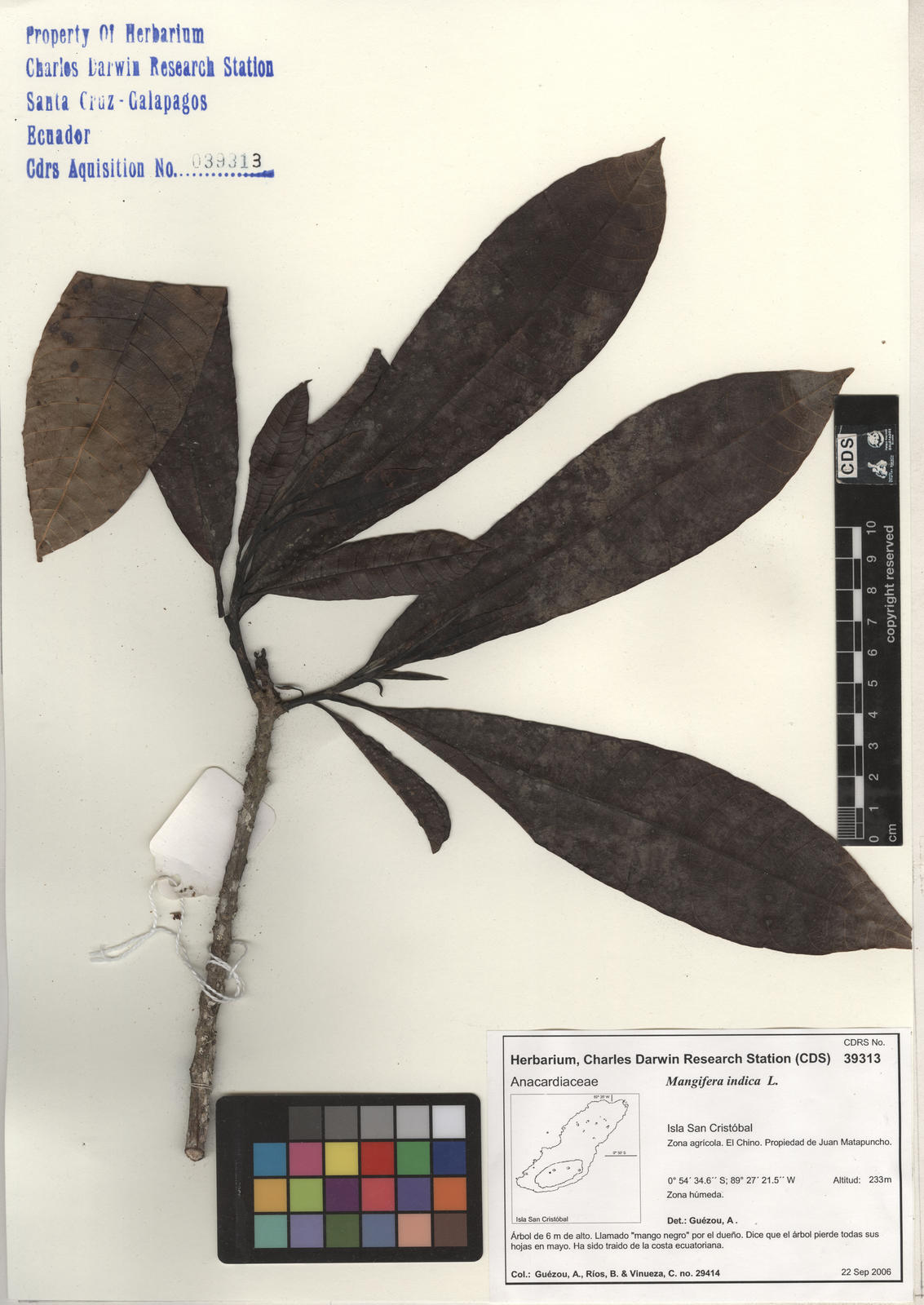
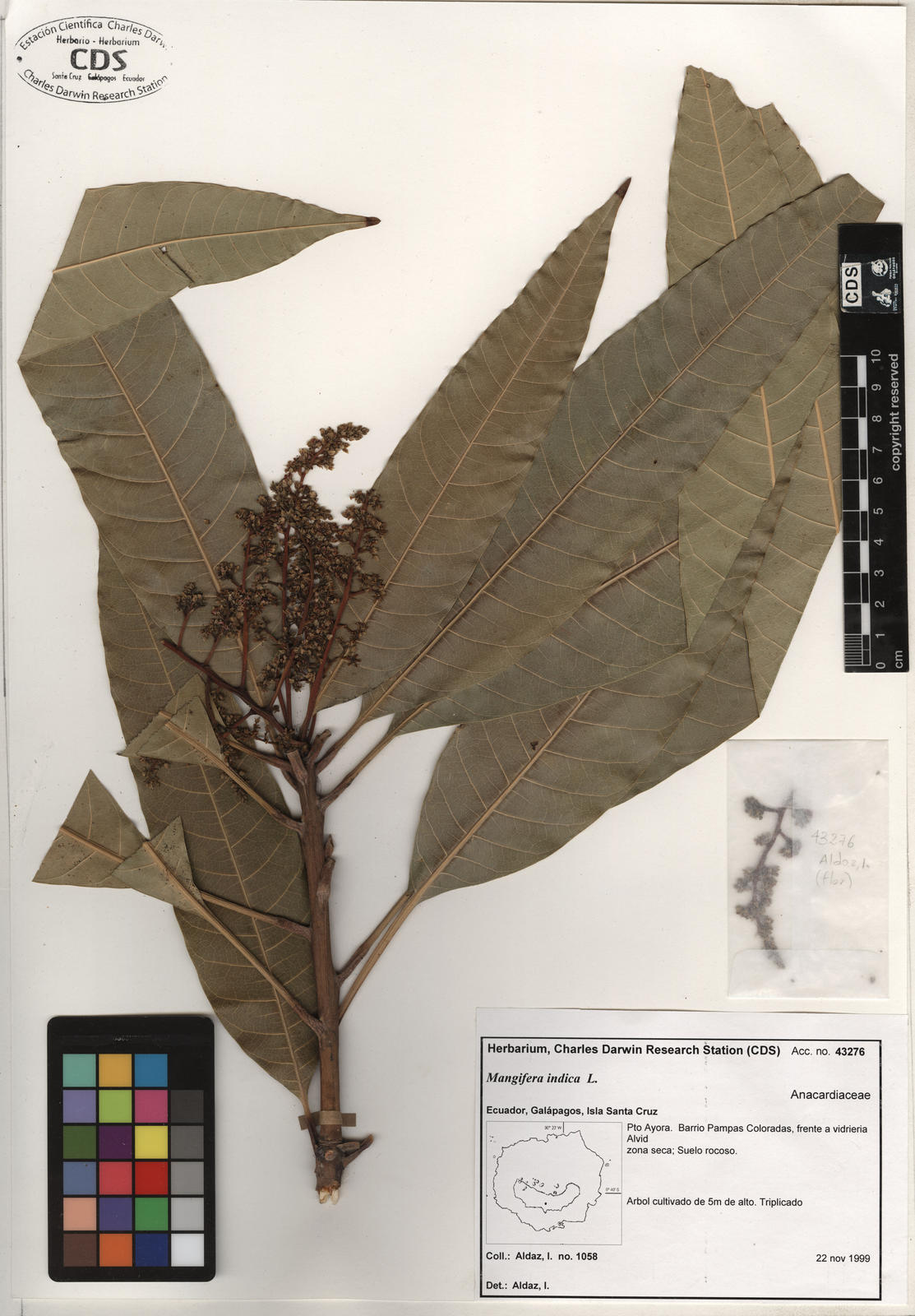
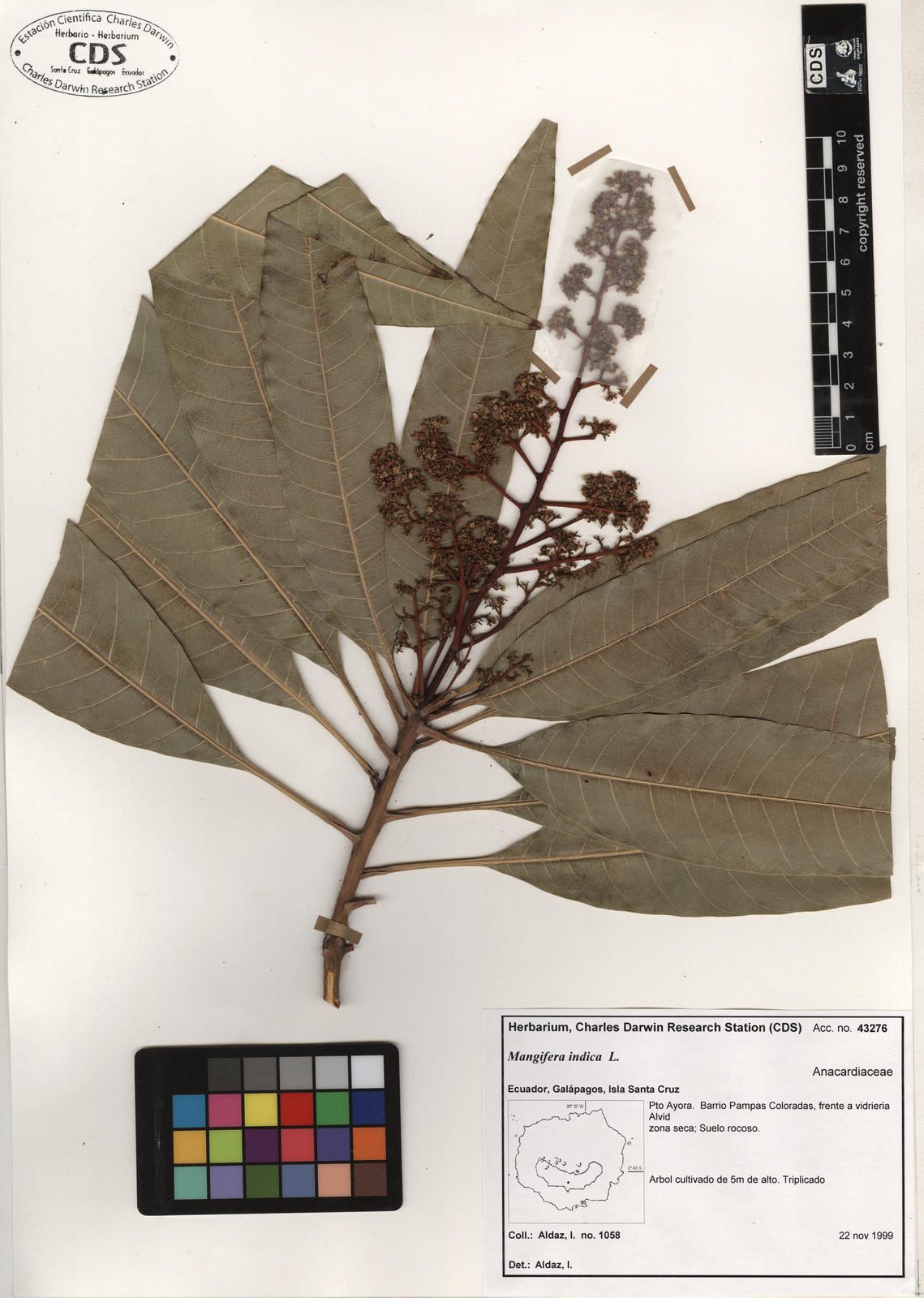
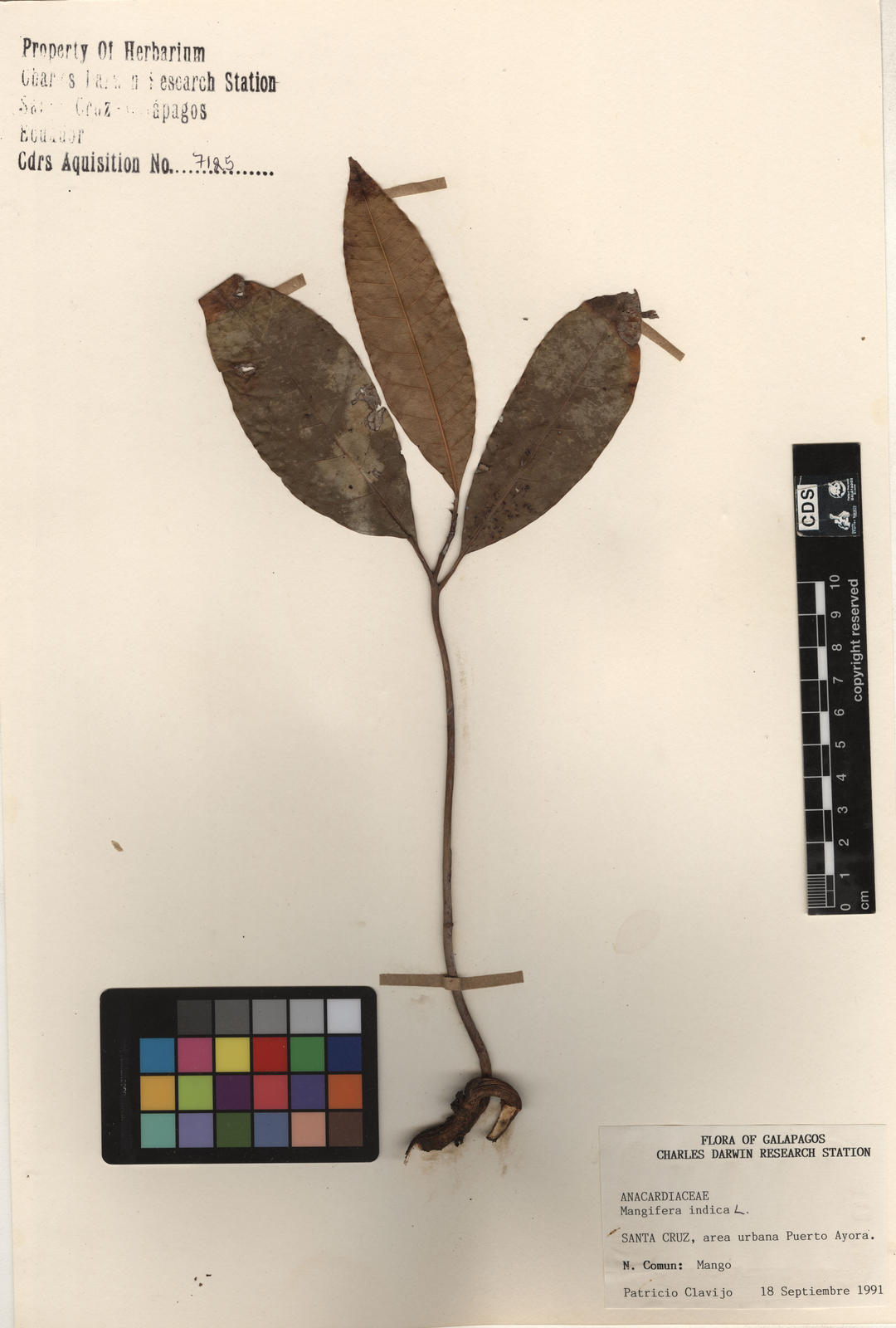

Trees, 10-20 m tall; branchlets brown, glabrous. Petiole 2-6 cm, grooved apically, inflated basally; leaf blade oblong to oblong-lanceolate, 12-30 × 3.5-6.5 cm, leathery, deep green adaxially, light green abaxially, glabrous on both sides, base cuneate to obtuse, margin entire, undulate, apex acute to long acuminate, lateral veins 20-25 pairs, midrib prominent on both sides, reticulate venation obscure. Inflorescence paniculate, terminal, 20-35 cm, glabrous to tomentose-pilose; bracts ca. 1.5 mm, lanceolate pubescent (WFO, 2022).
It is used to treat unspecified medicinal disorders, as animal food, a poison and a medicine, has environmental uses and social uses and for fuel and food (POWO, 2022).
Domain
Eukaryota
Kingdom
Plantae
Phylum
Magnoliophyta
Class
Magnoliopsida (= Dicotyledoneae)
Order
Sapindales
Family
Anacardiaceae
Genus
Mangifera
Species
indica
Taxon category: Accepted
Syn.: Mangifera austroyunnanensis Hu
Origin: Introduced - established
Year of first record: 1964
Mode of introduction: Intentional
Introduction Pathway: Intentional
Subpathway: Agriculture/Horticulture
Introduced status: Naturalized
Invasive status: No data
Map of specimen collection localities or observation records for this species in our collections database.
Distribution: Its native range is Assam to China (S. Yunnan) (POWO, 2022).
- Chavez, J. (1993) Diagnostico de la Agricultura y la Ganader¡a en la Provincia de Galapagos. Tesis.
- Guézou, A. Trueman, M., Buddenhagen, E., Chamorro, S., Guerrero, A.M., Pozo, P., Atkinson, R. (2010) An extensive Alien Plan Inventory from the Inhabited Areas of Galapagos Plos One/ www.plosone.org. Volume 5/ Issue 4/e10276
- Jaramillo, P. (1999) Impact of Human Activities on the Native Plant Life in Galapagos National Park. Galapagos Report, 50-55 (Eds P. Ospina and E. Muñóz.). Quito-Ecuador: Fundación Natura and World Wildlife Fund (WWF).
- Jaramillo, P. (1999) Impacto de las Actividades Humanas sobre las comunidades de plantas nativas en el Parque Nacional Galápagos. Informe Galápagos, 50-55 (Eds P. Ospina and E. Muñóz). Quito-Ecuador: Fundación Natura y el Fondo Mundial para la Naturaleza (WWF).
- Jaramillo, P. (1998) Distribución Espacial de la Vegetación Vascular y Dispersión de Especies Introducidas dentro del Parque Nacional Galápagos. Tesis de Doctorado en Biología, Universidad Central del Ecuador. Especialización ECOLOGIA DE POBLACIONES.
- Lawesson, J.E. (1987) Plantas exóticas en las Islas Galápagos, un resumen. Memorias. Taller sobre investigación Botánica y manejo en Galápagos. Pg. 17-23.
- Tropicos.org. (2017) Database of Missouri Botanical Garden. Tropicos.org. Missouri Botanical Garden. 06 Oct 2017 <http://www.tropicos.org
- Wiggins, I.L. Porter, D.M. (1971) Flora of the Galapagos Islands Standford University Press, Stanford.
You are welcome to download and use the information found in this page, acknowledging its source.
This page should be cited as follows:
"Galapagos Species Database, Mangifera indica", dataZone. Charles Darwin Foundation, https://datazone.darwinfoundation.org/en/checklist/?species=178. Accessed 18 December 2025.
